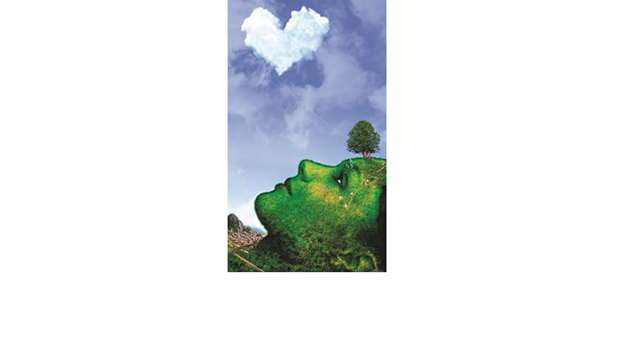When members of the White Earth band of Ojibwe in Minnesota take out their canoes to harvest wild rice, they’re gathering a source of nourishment and following a tradition that has connected them to the land for generations.
But to the White Earth people, manoomin isn’t just a resource to be used — it’s an independent entity with the right “to exist, flourish, regenerate and evolve.”
Other tribes and even some cities also are embracing the idea that Mother Nature has legal rights — setting the stage for court battles that could shake governments, businesses and the environmental movement.
Earlier this year, voters in Toledo, Ohio, passed the Lake Erie Bill of Rights, which declared “irrevocable rights for the Lake Erie Ecosystem to exist, flourish and naturally evolve.” The measure would give the ecosystem legal standing, which means that the lake — with help from a human guardian — could enter the court system as a plaintiff and sue polluters.
Recognising “rights of nature,” as the concept is known, also would shape city and state permitting and planning decisions. And it might become a powerful tool in fighting climate change and habitat loss.
But it’s still uncertain if any of the forms the movement has taken — protecting specific watersheds, habitats and species — will prove most effective as a legal tactic. And critics in business and government contend that overly broad declarations could paralyse important development and infrastructure if entire habitats are rendered untouchable.
“Our legal system gives corporations rights, but treats nature as property that can be exploited,” said Tish O’Dell, Ohio organiser with the Community Environmental Legal Defense Fund, which helped back the ballot measure. “If we don’t have the right to clean air and clean water in the Constitution, that was because our Founding Fathers couldn’t even fathom that would be something you’d need to write in.”
But the Lake Erie Bill of Rights, one of a handful of such measures enacted across the country, is being challenged in court. Drewes Farm Partnership, an Ohio business, asserts the measure is unconstitutional and would harm agriculture and other interests in the region. That challenge is currently awaiting a ruling from the US District Court for the Northern District of Ohio.
Some state attorneys general, agricultural interests and business groups say recognising rights of nature would make businesses and governments vulnerable to lawsuits over almost any action with an impact on the environment. Thomas Fusonie, a lawyer representing one of the plaintiffs in the Lake Erie lawsuit, said the Toledo measure would allow any city resident to sue “any business or government within the watershed for really undefined potential violations.”
“When you’re talking about the right for soil or mosquitoes to naturally evolve, people are going to have different views on what might violate that,” Fusonie said. “You can’t do anything to the land. You can’t farm it, you can’t put new roads in, you can’t do landscaping.”
Several US tribes already have enacted rights of nature laws, pointing out that indigenous people have long treated nature as a shared resource that must be preserved.
“These are the natural laws that have always existed prior to the poisoning of the land by the extractive industry,” said Casey Camp-Horinek, a councilwoman in the Ponca Nation in Oklahoma and a leader in the rights of nature movement. “If you eat, if you breathe, if you drink water, then it’s an undeniable connection between human and nature.”
In 2017, the Ponca Nation became one of the first tribes in the country to enact a rights of nature law, an anti-fracking measure aimed at protecting the tribe from an increasing number of earthquakes and rising cancer and asthma rates.
Soon after, the White Earth band of Ojibwe enacted its own law recognising the rights of wild rice, as well as its freshwater resources and habitats. The Ojibwe signed a treaty with the federal government in 1837, granting it access to wild rice on ceded territory.
But that treaty means nothing if there is no wild rice left to be harvested, said tribal attorney Frank Bibeau.
“Wild rice has a right to exist, it has a right to flourish,” Bibeau said. “We have a right to defend it and protect it.”
For the tribe, harvesting wild rice is not just a matter of economic or nutritional importance, but a continuation of cultural and spiritual practices. It also carries strategic value, as the tribe’s treaty guarantees continued access to the resource, and protecting the rice means protecting the water on which it grows.
“Wild rice is the most important cultural aspect of our livelihood,” Bibeau said. “Our migration path took us here to the Great Lakes, where the food grows on the water. If we can protect the water, then we’re probably protecting everything else.”
The White Earth band is hopeful it can use the law to block future threats to the resource, such as oil pipelines and mines. But like many other aspects of tribal law, questions of jurisdiction remain a challenge.
“It’s very difficult to get standing (to sue),” said Rain Bear Stands Last, executive director of the Global Indigenous Council. “When you come to wild rice protection or protection of rivers or salmon, you can go into a tribal court theoretically with a case, but you actually would have to get the defendant to show up. … The tribe doesn’t have jurisdiction outside the boundaries of the reservation.”
Bear Stands Last helped assemble support in 2016 for the Grizzly Treaty, a document signed by more than 200 US and Canadian tribal nations recognising the grizzly bear’s right to exist in a healthy ecosystem. That coalition won a court victory in 2018 that overturned the Trump administration’s attempt to remove Endangered Species Act protections for the bears.
It isn’t clear whether a tribe’s treaty rights — or its connection to a resource that crosses boundary lines — are enough to establish jurisdiction.
The rights of nature movement started in 2006 with a law in Pennsylvania’s Tamaqua Borough to prevent the dumping of toxic sludge. Since then, about two dozen communities have crafted their own measures, including an anti-fracking provision in Pittsburgh, a ballot measure to stop aerial pesticide spraying in Lincoln County, Oregon, and a climate bill of rights that banned fossil fuel extraction in Lafayette, Colorado.
Advocates on both sides say the movement is poised to face crucial questions about its place in US law in the years ahead.
“The law as we know it recognises the earth and ecosystems as human property,” said Shannon Biggs, a co-founder of Movement Rights, which advocates for nature’s rights. “Corporations can frack in communities or blow off the tops of mountains — that’s a privilege that’s been granted to corporations in this country. That’s not going to go easily.”
Following the passage of the Lake Erie Bill of Rights, the Ohio General Assembly approved a budget that expressly prohibits legal standing for ecosystems, a provision inserted by Republican state Representative Jim Hoops at the behest of the Ohio Chamber of Commerce, according to emails obtained by Ohio activist Bill Lyons in a public records request.
Hoops did not respond to requests for comment; a spokesperson for the chamber was unable to be reached before publication.
Ohio Attorney General Dave Yost, a Republican, joined the lawsuit against the Lake Erie Bill of Rights, “to ensure that Ohio’s ability to regulate Lake Erie is not impeded or impaired,” his office said in a statement.
Rights of nature advocates say they recognise the state’s regulatory authority. But they argue that environmental problems — toxic algae blooms in Lake Erie shut down Toledo’s water supply in 2014 — prove those regulations don’t go far enough.
“It’s not that the law isn’t being followed, it’s that the law isn’t written to protect you or the environment,” said Markie Miller of Toledoans for Safe Water, which pushed for the Lake Erie Bill of Rights. “It’s the structure of law that’s inherently unsustainable. It makes sustainability downright illegal.”
The Ohio Farm Bureau disagrees, saying its members have changed their practices and supported research on how to reduce the runoff of fertiliser shown to cause the toxic algae. Giving rights to the lake, the organisation said, would create too much liability for farmers.
“(Farmers) are not bad actors, and they’re not polluting intentionally, and they’re not doing bad things on their farms,” said Yvonne Lesicko, the Ohio Farm Bureau’s vice president of public policy.
As the rights of nature movement tries to gain traction, it will have to grapple with which pieces of nature it seeks to protect and what the fallout of those protections will be. Prior to the Toledo measure, most municipal — though not tribal — rights of nature laws were written generally, rather than focused on a specific ecosystem. Opponents of that law note that it defines the Lake Erie ecosystem as including all natural water features, communities of organisms and soil, which they believe could stifle nearly any human activity.
Legal experts have raised this question as well, noting that the movement may need to endure a trial-and-error period before it’s answered.
“Establishing the right balance between human development and the respect of nature’s rights will prove challenging for the courts,” wrote attorney Lidia Cano Pecharromán in a journal article published last year.
Mari Margil, associate director of the Community Environmental Legal Defense Fund, which was a key backer of the Ohio law, acknowledged that it may take some time to sort out the balance. But she called the idea that residents near Lake Erie won’t be able to mow their lawn or swat a mosquito a “red herring.”
“(Rights of nature laws) have focused on how you protect those natural systems, recognising that we need to keep these ecosystems healthy and thriving,” she said. “What we’re talking about here is protecting species on the whole, not an individual blade of grass.”
In other words, activities like hunting, landscaping and construction wouldn’t be outlawed if they affected an animal or a tree, but only if they were to threaten the existence of a forest ecosystem or species of animal as a whole. Margil added that protections are best shaped by the communities that wish to establish them, whether they’re concerned about drinking water, oil spills or the survival of a certain plant or animal. — Stateline.org/TNS

..


